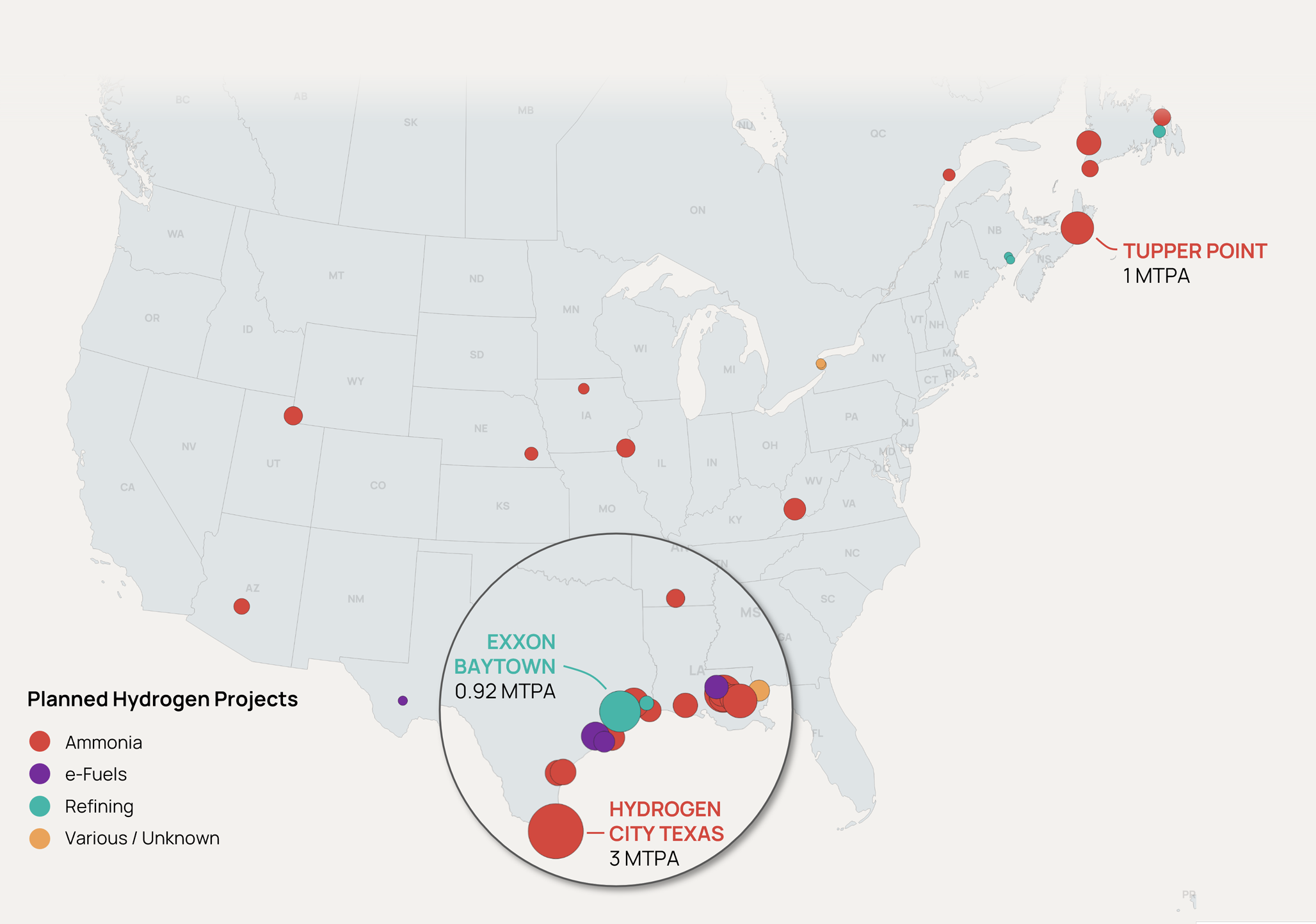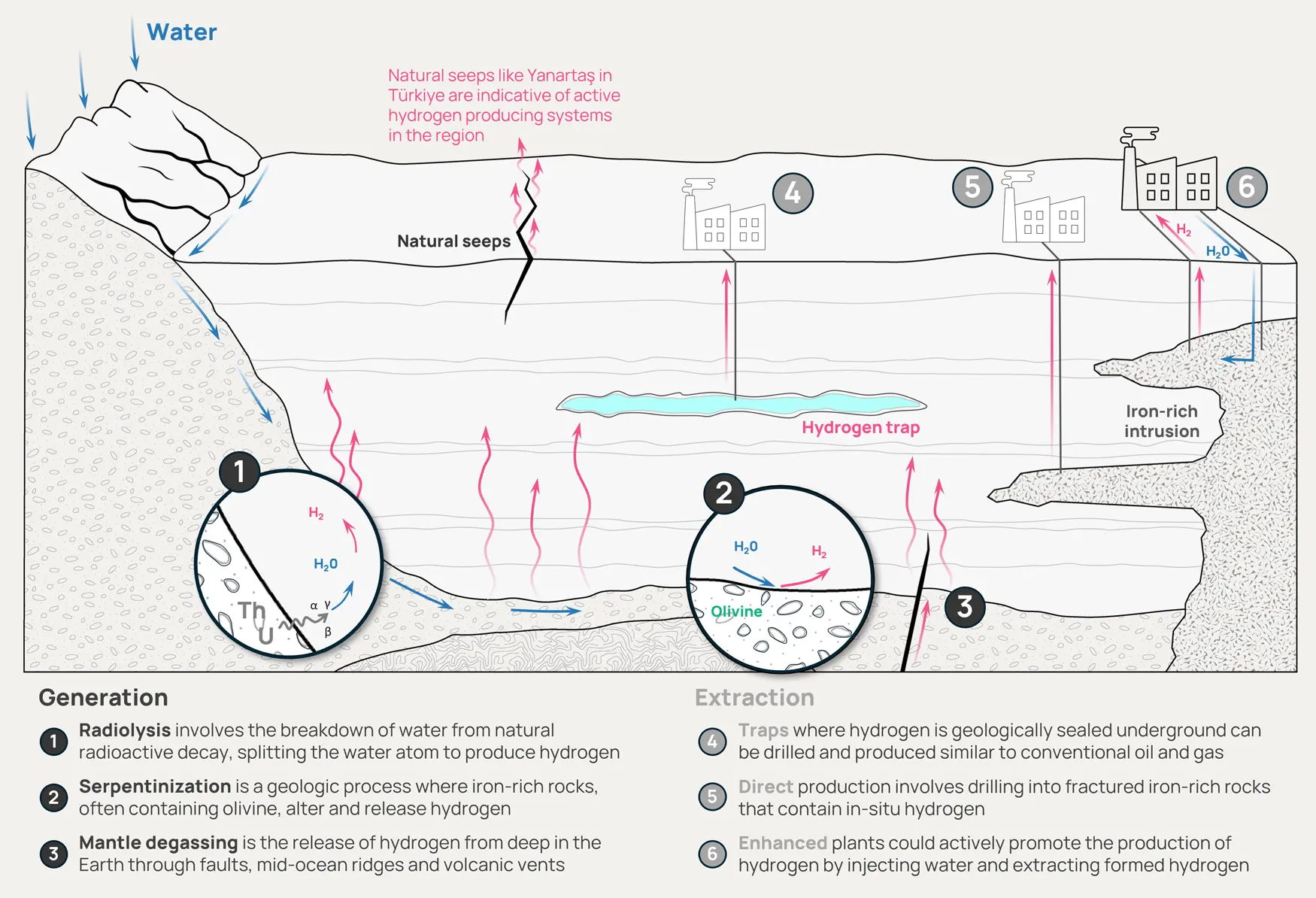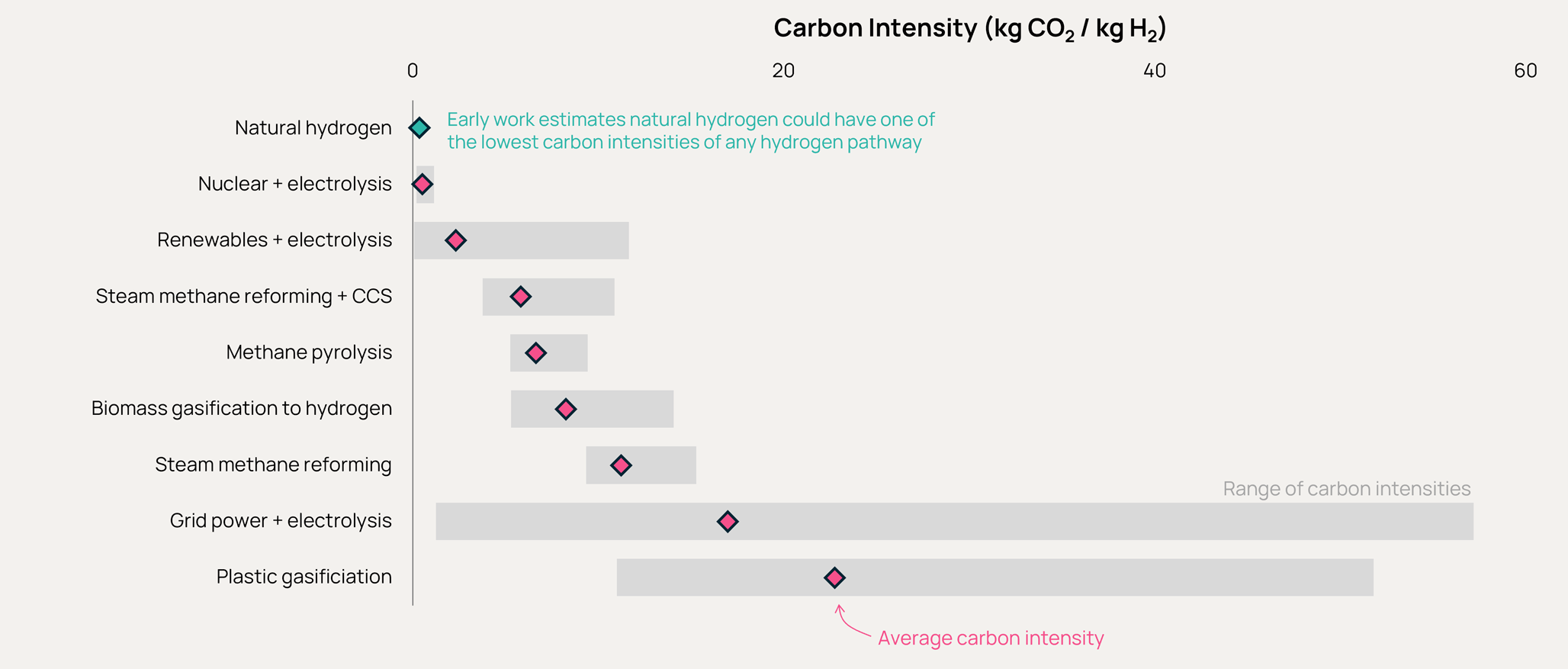By Aaron Foyer
VP, Orennia
Curious flames can be found in Türkiye’s Anatalya, a Mediterranean province in the country’s southwest. Near both the Olympos valley and Mount Chimera, gas seeps have been burning in place for more than 2,500 years. This geologic feature goes by many names, including Yanartaş (Turkish for flaming stone) and the Eternal Flames of Chimera.

For millennia, these were used by sailors as navigational tools. More famously, it’s believed the Yanartaş fires were the source of the very first Olympic flame.
What’s behind the flames? According to Homer’s epic The Iliad, the fire-breathing monster Chimera lived on Mount Chimera right by the flames, and far be it for us to challenge any Greek mythology and risk angering the gods. But modern sampling of the gas unearthed a new mystery to the gas seeps: they contain remarkably high levels of pure natural hydrogen. As a result, it’s now more than just Classical Studies students who are interested in the source of the flame.
Beyond Yanartaş, occurrences of natural hydrogen are happening more and more, raising the possibility that the fuel source could help meet our decarbonization goals.
___
BACKGROUND
Low-carbon hydrogen is viewed as a means to decarbonize many industries, including shipping, aviation, steel, refining and more. In the US, many of the announced offtakers for existing low-carbon hydrogen projects include ammonia, heavy-duty vehicles and e-fuels.
While almost all hydrogen production today is carbon intensive, produced from natural gas or coal without emissions abatement, the search for scalable, low-cost, low-carbon alternatives is underway. If natural hydrogen can compete, it may help foster low-carbon industries.
End Use of Announced Low-Carbon Hydrogen

Source: Orennia
Where it all started: The first true discovery of natural hydrogen was made in the West African country of Mali. In 1987, in the village of Bourakébougou, drillers looking for water accidentally produced a stream of unusual gas from the otherwise dry well. Being a colorless and odorless gas, no one suspected hydrogen until it was inadvertently set ablaze by one of the drillers lighting a cigarette. Twenty-five years later, starting in 2012, the stream of 98% pure hydrogen was captured and used to run a generator to power the village.
Recent hype: Public excitement for natural hydrogen took off last spring when French scientists accidently discovered a large deposit of natural hydrogen in northeast France. Since then, more deposits have been found. The notable finds include a pool of 95.8% pure hydrogen found in South Australia and probably the world’s largest discovery to date in an Albanian ore mine.
Natural hydrogen is so new to the energy transition there has yet to be a consensus on its lexicon – we all know how excited people get in assigning colors to hydrogen. While often referred to as natural hydrogen, it also goes by naturally occurring hydrogen, geologic hydrogen, native hydrogen, hydrogen by serpentinization, yellow hydrogen, white hydrogen and gold hydrogen.
___
COULD THE HYPE BE REAL?
To start, little is known about its abundance. It’s estimated that 4 million wells have been drilled for oil and gas across the US alone, so you could be forgiven for thinking we’d know more about hydrogen in the subsurface than actually we do. There are a couple reasons for this.
First, natural hydrogen looks to be most productive in areas where oil and gas are not present. This is in part due to how it’s formed (more on this in a sec) and because any free hydrogen present near oil and gas generation would be consumed to make more hydrocarbons. As a result, limited exploration drilling has happened in areas most likely to house natural hydrogen.
Second, hydrogen is difficult to detect. Beyond being odorless and colorless, most chemical tests for gases used by industry – chromatographs – don’t test for hydrogen at all. Hence why the first major discovery was made by a flagrant cigarette, not ExxonMobil.
What we do know: Unlike oil and gas, which form from organic-rich rocks, hydrogen forms from radiogenic or iron-rich rocks.
- Radiogenic: Radioactive elements – think uranium, thorium and potassium – undergoing decay can release hydrogen when interacting with water.
- Iron-rich rocks: Minerals like olivine can undergo a process called serpentinization in the presence of water, which also releases hydrogen.
Another interesting divergence from oil and gas is how fast hydrogen is produced. While oil and gas take on the order of thousands to millions of years to form, subsurface hydrogen can take just days. This has interesting implications.
Regenerative? With the hydrogen production in Mali, well pressures have been increasing over time, the opposite of what you’d expect from a conventional gas well with reservoir depletion. This means there’s an active system generating new hydrogen at a faster pace than it’s being produced.
How Natural Hydrogen is Produced

On top of hydrogen wells that could almost be classified as renewable, this also opens the door for enhanced production by injecting water underground to actively produce hydrogen from iron-rich rocks.
___
VOLUME ESTIMATES
While the discoveries in Mali, France, South Australia and Albania are all encouraging, it’s still early days in the search for natural hydrogen. There are a couple of different ways to think about its global potential today.
Reservoir half full: It could be highly meaningful. The US Geological Survey (USGS) has teased the results of its upcoming global natural hydrogen resource estimate and its models found as much as 5 trillion tonnes of hydrogen could be trapped in the subsurface. While most would be economically inaccessible, even recovering just 2% of this supply could meet the IEA’s 2050 annual hydrogen demand estimate of 500 million tonnes for hundreds of years. (Should cheap and abundant hydrogen be discovered, its demand might exceed the IEA’s current estimates.)
As Geoff Ellis of the USGS put it in a recent webinar, “naturally occurring hydrogen looks to be more abundant than we realize.” Though it should be said, with very limited data, the USGS estimates have error bars that make Jim Cramer look like Warren Buffett.
Reservoir half empty: While exciting, natural hydrogen discoveries to date are no Spindletop. The largest natural source of hydrogen in the world today is from the Albanian ore mine, which produces an estimated 200 tonnes of hydrogen per year. To put this in context, that would supply just 0.4% of a single 1-million-tonne-per-year steel plant. The world produced 1.85 billion tonnes of steel last year.
___
BUT IT’S STILL WORTH PURSUING
When it comes to low-carbon hydrogen options, like John and Yoko, au naturel might be best.
The carbon intensity of natural hydrogen looks to be among the lowest of all sources, rivaling even hydrogen produced using renewable power.
Carbon Intensities of Various Hydrogen Sources

On costs: Scant public data exists, but some companies believe the cost to produce is low. Australia-based HyTerra says it can produce natural hydrogen for less than $1/kg, and it’s been reported that Canadian producer Hydroma is already extracting hydrogen for $0.50/kg. Compared to other sources of low-carbon hydrogen, this would put it well ahead of today’s more popular means.
Context: Other leading sources of low-carbon hydrogen include steam methane reforming (SMR) paired with carbon capture, utilization and sequestration (CCUS) and electrolysis-based hydrogen. Unsubsidized, SMR with CCUS is estimated to produce hydrogen for ~$1.50/kg while the best electrolysis-based hydrogen projects that maximize credit generation are closer to $4.50/kg.
With its low carbon intensity, natural hydrogen would qualify for the full $3-per-kilogram 45V tax credit, easily covering the reported project costs. As an added benefit, natural hydrogen producers would not have to worry about headaches like hourly power matching and additionality that green hydrogen producers face.
Looking ahead: It’s still early days with much to be discovered. The US Department of Energy recently dolled out $20 million to 16 different projects exploring for natural hydrogen. Almost all were for academic institutions, but there are some commercial ventures out there.
In Oman, following some significant hydrogen leaks detected in the Western Hajar mountains, Massachusetts-based Eden will look to stimulate hydrogen production in local peridotite (iron-rich) rocks.
And Koloma, a Denver-based startup exploring for natural hydrogen, raised an impressive $245 million in its recent Series B round. This follows the company’s Series A round, which included Bill Gates’ Breakthrough Energy Ventures.
___
SPARKED THOUGHTS
- More abundant than we think? Little is still known about the abundance of natural hydrogen without targeted drilling or testing. Some early indications show it may be more abundant than previously thought.
- Almost renewable? One of the most interesting aspects of natural hydrogen is how quickly it can be produced. With hydrogen forming on the order of days, large natural deposits could rejuvenate quickly and could produce for long periods of time.
- Hydrogen economy catalyst or red herring? The use of low-carbon hydrogen to decarbonize many of our hard-to-abate sectors is still nascent. Discovering a cheap source of low-carbon hydrogen may be the catalyst needed to spur these industry changes. On the other hand, it may be another instance of economies getting hooked on another non-renewable resource that pushes the true renewable economy down the road.
Aaron Foyer is Vice President, Research and Analytics at Orennia. Prior to Orennia, he leveraged his technical background in management consulting and finance roles. He has experience across the energy landscape including clean hydrogen, renewables, biofuels, oil and gas, petrochemicals and carbon capture. 



